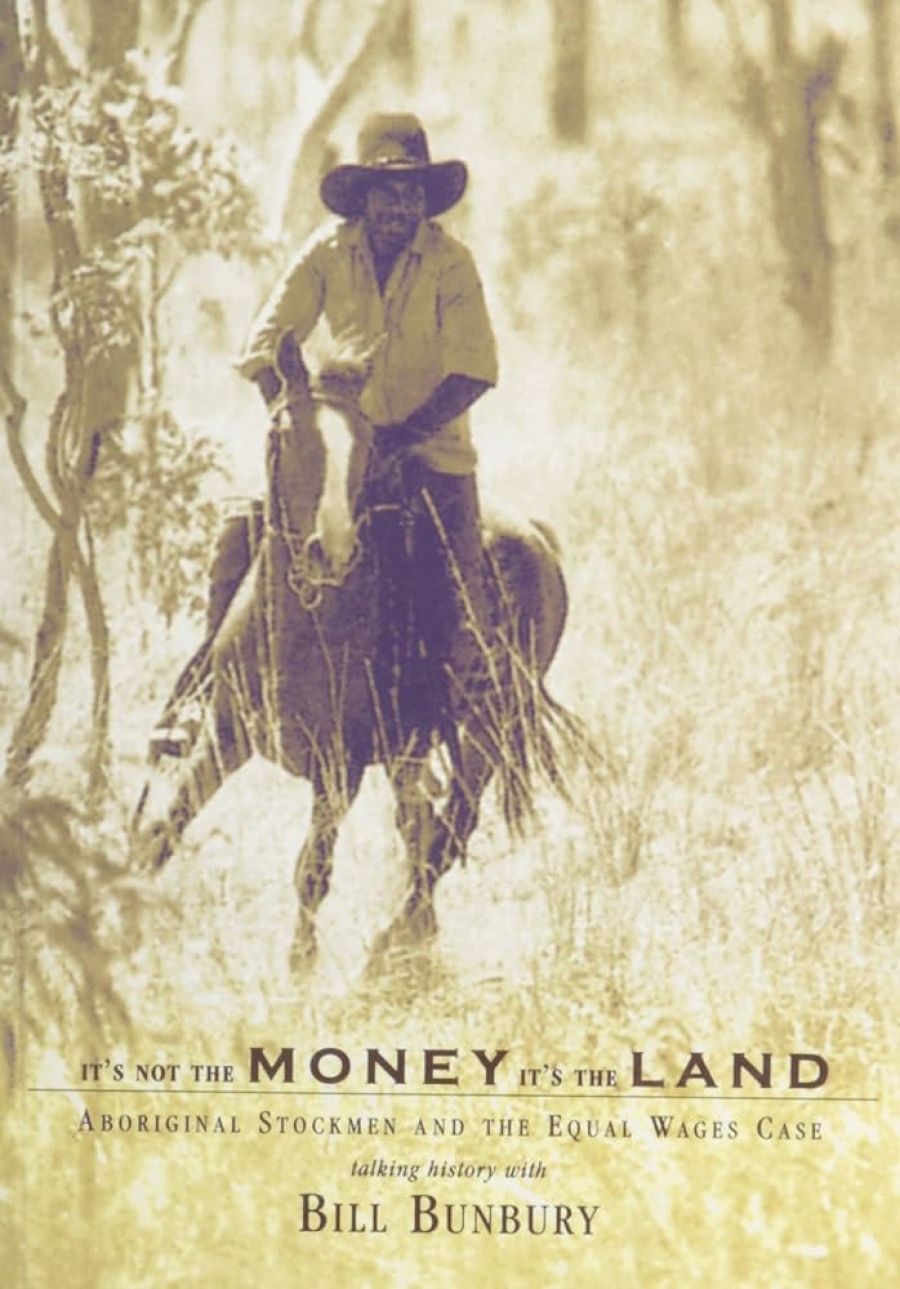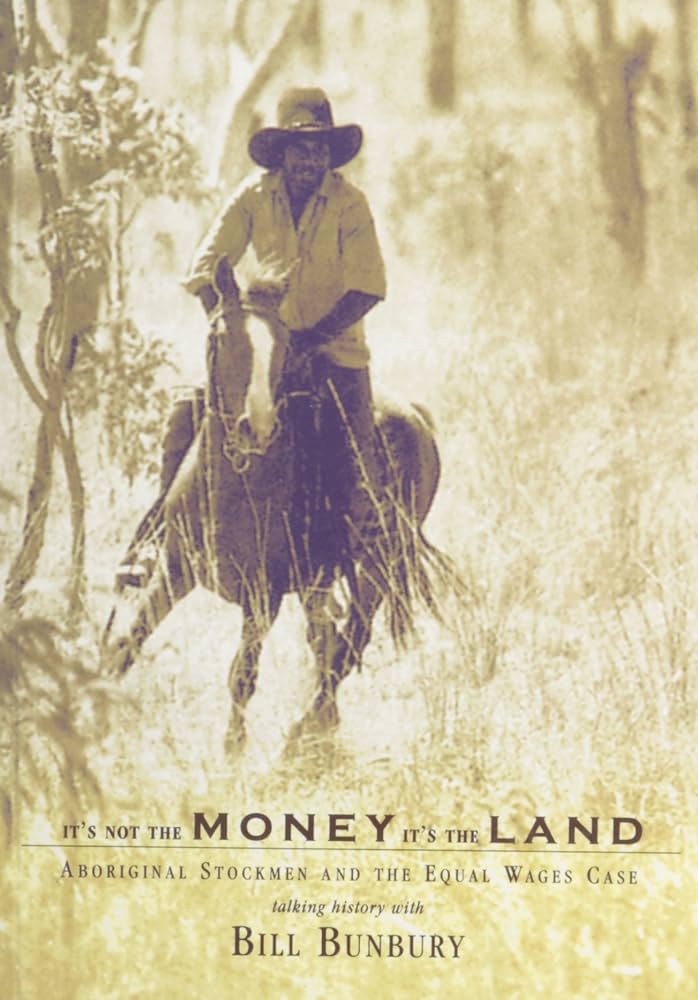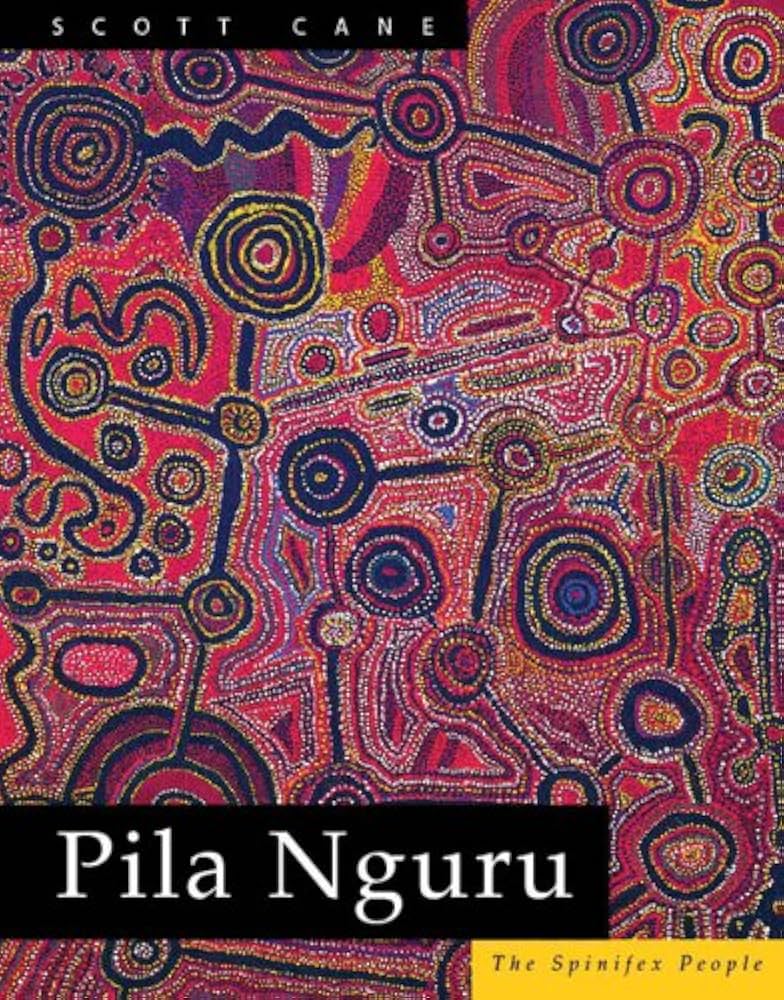
- Free Article: No
- Contents Category: Australian History
- Review Article: Yes
- Article Title: Changing Bosses
- Online Only: No
- Custom Highlight Text:
The pastoral frontier continues to be a site for stories of nation-building. In Mary Anne Jebb’s and Bill Bunbury’s books, the stories are not so much ‘how we got the country started, boots and all and not half-hearted’, but about the limits of liberalism and questions of indigenous rights. Having worked for many years with eighteen Aboriginal ‘storytellers and key characters’, Jebb returns to the region evoked by Ion Idriess in Over the Range: Sunshine and Shadows in the Kimberley. In 1937 that travelogue–history sold ten thousand copies in a fortnight. No apologist for colonisation, Jebb shows us its difficulties.
- Book 1 Title: It’s Not the Money, It’s the Land
- Book 1 Subtitle: Aboriginal Stockmen and the Equal Wages Case
- Book 1 Biblio: FACP, $24.95 pb, 192 pp
- Book 1 Cover Small (400 x 600):

- Book 1 Cover (800 x 1200):

- Book 2 Title: Pila Nguru
- Book 2 Subtitle: The Spinifex People
- Book 2 Biblio: FACP, $49.95 pb, 260 pp
- Book 2 Cover Small (400 x 600):

- Book 2 Cover (800 x 1200):

In the rations-based mixed economy that prevailed in the north Kimberley from World War I until the 1950s, police visits were few, usually occasioned by reports of violence. The colonial authority was the ‘boss’ – the adventurous and often ruthless whites whose modus vivendi with Aborigines mingled violence, rations, and interactions in the stockyard and the ‘bedroom’ (if makeshift homesteads had them).
Local authority contests went beyond ‘Blacks vs Whites’. Pastoralists, police, inspectors, forceful Aboriginal men, resourceful Aboriginal women, ‘half-castes’ and police trackers struggled to survive, perform their duties and prosper in a world whose rules and customs were rapidly evolving. Perhaps the resource most persistently disputed was not land (for different land uses could coexist) but children. Disrupted male–female relations and introduced diseases made them scarce; children were ‘prospected’ and ‘rescued’ and many were taken south. Leprosy quickened the efforts of authorities to sort Aborigines into governable categories: station hands, residents of missions and government settlements, and inmates of the Derby Leprosarium (1936–86, its population peaking in 1951). In the 1940s and early 1950s the Western Australian government ceased to fund missions and settlements in the Kimberley. The policy of assimilation committed the state government to reforming the cattle industry in three ways: loosening its hold on Aboriginal children; replacing rations with social security benefits; and bringing Aboriginal stockmen under the Cattle Station Industry Award.
How historians depict this modernising medley has become an issue of great interest. Enter Bill Bunbury, the ABC’s oral historian. The title of his book declares his understanding of the aspirations of Aborigines in the 1960s. It corrects the view that to be fair to Aborigines was to include them in the Cattle Station Industry Award. For wage justice (effected in three wage increments between 1966 and 1968) precipitated pastoralists’ ejection of Aboriginal workers and their families from pastoral leases. Since many Aboriginal people were working the cattle in order to remain in de facto possession of their ancestral land, Bunbury argues, the triumph of ‘wage justice’ meant defeat for the Aborigines in much of northern and central Australia. It broke ‘a long-standing relationship – not an equal one but a relationship nonetheless – between the pastoral worker and the pastoralist’. Geoffrey Bolton’s Foreword laments that an ‘equitable measure of wage justice’ wrought ‘the near destruction of a section of Aboriginal society which until then had managed to preserve much of its sense of identity and tradition while coming to terms with the pastoral takeover of its country’.
This story – ironising liberalism’s best intentions – has new resonance. Noel Pearson has argued that insisting on indigenous Australians’ rights to welfare, wages and the pleasures they buy, without considering the social context of their application, produced the nightmare in the Cape York communities. Pearson’s and others’ demonisation of ‘progressives’ has put in question any use of the language of ‘rights’. In one view (not Pearson’s), the worst excess of the ‘progressives’ has been the High Court’s Mabo and Wik judgments, creating the new ‘right’ of ‘native title’.
Bunbury’s materials, however, undermine the Bunbury/Bolton thesis. For example, his statistics show that the Aboriginal exodus from pastoral leases, whether forced or voluntary, began years before the Equal Wages case. Why? Bunbury mentions the repeals in 1963 of Western Australia’s restriction of Aborigines’ movement, residence and spending. Assimilation enhanced town-based services, including schools. From 1959 Aborigines gained better access to pensions. He cites anthropologist Patrick Sullivan: Aborigines ‘left the stations because they were harshly treated, once they were able to leave the stations’. The ‘long-standing relationship’ was founded on a strictly regulated station camp life. Aborigines wanted more, and public policy gave them more. According to Bunbury, when the ‘more’ included alcohol, even such a staunch friend of Aboriginal peoples as Don McLeod experienced the change as a loss of authority over, and of community with, Aborigines.
Pastoralists differed in their reactions to the wage rise. Some viewed Aboriginal labour merely in commercial terms. Others accepted subsidised ‘welfare’ responsibilities for the large extended families of their stockmen. Bunbury eventually concedes that it is unwise to consider ‘the Equal Wages Award story … in isolation’. He grants that some Aboriginal people desired a ‘different lifestyle’. With Hal Wootten (John Kerr’s junior in arguing the pastoralists’ case against a wage rise), Bunbury deplores that Aborigines did not speak in the Arbitration Court in 1965. Good point, but it is difficult to imagine what their perspective would have been. They were in the midst of a transition so complex in its determinations and outcomes that one cannot postulate with confidence ‘the Aboriginal interest’. Bunbury’s book evinces more uncertainty about indigenous aspirations than its title implies.
Jebb describes the subtle shift of responsibility for Kimberley Aborigines’ sustenance, between 1959 and the mid-1970s, from pastoralists to state and commonwealth government agencies. Governments could not persuade pastoralists to formalise their welfare functions; and the modernisation of the pastoral industry secured the priority of investors’ interests. Meanwhile, Aborigines who demanded more of both industry and government found some of what they wanted in towns. The Kimberley story illustrates the extent to which much assimilation implied urbanisation. This is no Burkean parable – the folly of asserting rights against custom. Rather, Jebb’s nuanced account reminds us that colonial relationships and liberal reforms are dynamic, even revolutionary, in their impact. They force the colonised to experiment, sometimes disastrously, with the accommodations afforded by the changing relationships among colonising authorities.
The Spinifex people, discussed in Scott Cane’s book, did not experience pastoral colonialism. Rather, atomic bomb tests in South Australia in the 1950s compelled their temporary move north and west to ration points that offered Christian schooling without changing the ‘economy’ of the Nullarbor Plain. These least-colonised indigenous Australians were among the first to benefit from ‘native title’. Cane’s book is based on the document through which, in 1998, they asserted title. His tone is affectionate and admiring. Cane shows their customs of land tenure (in words and in paintings). He identifies their adaptations. The Spinifex people do not hunt camels or donkeys because of these creatures’ associations with Jesus. Welfare (including CDEP) could sustain the Spinifex people’s new way of life indefinitely, it would seem. Western desert people somehow found an estimated $300,000 in 1992 to stage a ritual gathering of 1200 at Tjuntjuntjara.
There are hints at problems. ‘Most Spinifex people have spent some time in jail’, for lethal fights and car accidents. Children now receive a Western education that is inferior to the mission instruction that the atomic bomb exiles got. The exception is the six girls who attend an Adelaide school. The Spinifex people have got the land that is theirs by ancestral right, but they are not yet out of the woods.


Comments powered by CComment